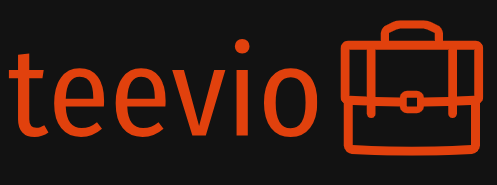Discover the transformative power of Gamification in Education, exploring its benefits, challenges, and practical implementation to boost student engagement and learning outcomes.
Key Takeaways:
- Gamification in Education leverages game-design elements to enhance student motivation and engagement.
- It fosters a more interactive and enjoyable learning environment.
- Benefits include improved retention, problem-solving skills, and a positive attitude towards learning.
- Successful implementation requires careful planning, appropriate tool selection, and clear learning objectives.
- Addressing potential pitfalls like over-reliance on external rewards is crucial for sustainable success.
Why Implement Gamification in Education?
The traditional classroom setting, while foundational, often struggles to capture and sustain student attention in an increasingly dynamic world. Enter Gamification in Education, a pedagogical approach that integrates game-design elements and game principles into non-game contexts, specifically for educational purposes. But why is this shift important, and how can it fundamentally change the learning landscape?
The core premise of gamification lies in tapping into the intrinsic human desire for play, achievement, and social connection. By introducing elements like points, badges, leaderboards, quests, and immediate feedback, educators can transform mundane tasks into engaging challenges. This isn’t about turning learning into a mere game for entertainment; rather, it’s about leveraging the psychological drivers that make games so compelling to enhance the learning process itself. When students are actively engaged, motivated by a sense of progress and accomplishment, their cognitive absorption and retention rates naturally increase. It’s about creating an environment where learning feels less like a chore and more like an exciting journey of discovery. The “why” is simple: to make learning more effective, enjoyable, and relevant for a generation accustomed to interactive experiences.
What is Gamification?
So, what exactly is Gamification in Education? It’s not simply playing games in the classroom, though educational games can be a component. Instead, it’s the strategic application of game-like mechanics and thinking to design learning experiences that are more immersive, interactive, and motivating. This involves identifying the core principles that make games engaging – such as clear goals, rules, feedback systems, and voluntary participation – and applying them to educational content.
For instance, a history lesson might become a “quest” where students earn “experience points” for correctly identifying historical figures or completing research tasks. A challenging math problem set could be framed as a series of “levels” to unlock, with “badges” awarded for mastering specific concepts. The immediate feedback inherent in many game designs, whether through points or notifications, helps students understand their progress and areas for improvement in real-time, fostering a growth mindset. This approach moves beyond passive information consumption, encouraging active participation, problem-solving, and critical thinking.
How Does Education Work?
The mechanics of Gamification in Education are surprisingly versatile and can be tailored to various subjects and age groups. At its heart, it works by providing clear objectives and a system of rewards that acknowledge effort and achievement. Consider a language learning application that awards points for correct answers, offers “streak” bonuses for consistent practice, and displays progress on a “mastery tree.” These elements, while seemingly simple, provide tangible indicators of progress, which can be immensely motivating.
Furthermore, gamification often incorporates elements of social interaction. Leaderboards can foster healthy competition, while collaborative quests can encourage teamwork and peer-to-peer learning. The ability to “level up” or “unlock” new content provides a sense of progression and mastery, preventing stagnation and encouraging continued engagement. It works by transforming abstract learning goals into concrete, achievable steps, making the educational journey feel more manageable and rewarding. The underlying psychological principle is that by making learning feel less like a burden and more like a game, students are more likely to invest their time and effort.
When Should You Use Gamification in Education?
The application of Gamification in Education isn’t a one-size-fits-all solution, but it can be particularly effective in specific contexts. It excels when the goal is to increase student motivation, improve engagement with challenging subjects, or promote consistent practice. For example, in subjects that often struggle with student disinterest, such as certain aspects of grammar or complex scientific theories, gamified elements can inject much-needed excitement.
It’s also highly beneficial when repetitive practice is necessary for mastery, as the gamified structure can make drills less tedious. Consider vocabulary building or memorization tasks; a points-based system with escalating difficulty can keep students engaged far longer than traditional methods. Moreover, it’s an excellent tool for fostering a sense of accomplishment and building confidence, especially for students who might otherwise feel intimidated by academic challenges. While it can be integrated into almost any subject, its impact is often most profound when used to transform traditionally dry or difficult content into an interactive and rewarding experience.
Where Can We See Examples of Gamification in Education?
Examples of Gamification in Education are becoming increasingly prevalent across various educational settings, from K-12 classrooms to higher education and even corporate training. Online learning platforms are prime examples, with many incorporating badges, progress bars, and interactive quizzes to keep learners engaged. Duolingo, a popular language-learning app, is a classic illustration, with its points system, streaks, and competitive leaderboards that motivate users to practice daily.
In traditional classrooms, teachers are experimenting with “Classcraft,” a platform that turns the classroom into a role-playing game, where students earn powers, battle monsters, and embark on quests related to their coursework. Khan Academy utilizes mastery challenges and energy points to encourage continuous learning. Even simpler implementations, such as using a sticker chart for younger students to track reading progress or a point system for class participation, fall under the umbrella of gamification. These examples demonstrate that gamification isn’t limited to high-tech solutions; its core principles can be applied in numerous creative ways to make learning more dynamic and effective, proving its versatility across the educational spectrum.


